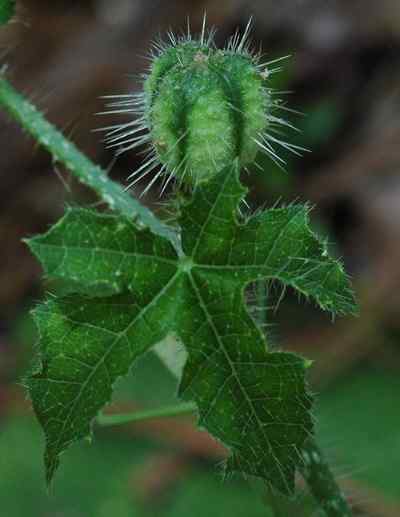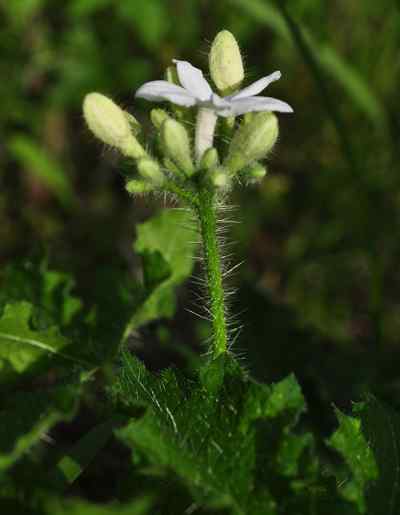Bull Nettle Wild Edible Plant For Survival

The Bull Nettle has edible seeds and an edible taproot too. The tap root can be surprisingly large compared to the rest of the plant. The seeds can be eaten raw or roasted and the tap root must be either roasted or baked.
Beware, the Bull Nettle is covered with tiny stinging hairs that you don't want any part of. The use of gloves is highly recommended when handling one of these plants.
What to look for? Well first the stinging hairs. The plant will be covered in these hairs. Stinging Nettle has an erect stem and is herbaceous when young then turns woody with age. Rarely does it grow taller than a couple of feet high. It produces white flowers with five petals each. The leaves are in an alternate pattern and each leaf has multiple untoothed lobes.
Harvesting the edible seeds should be done with pliers or heavy gloves to avoid the painful stinging hairs. The green seed pods which are covered in stinging hairs should be set aside to dry. At which time the seeds pod will open and allow the seeds to be safely gathered. The seeds are quite large, resembling some like a kidney bean in both sides and shape.
Don't forget the roots! Dig up the roots which might be bigger than you expected, so take care to start further out than you might otherwise with a shovel. After the root has been dug, cleaned and cut from the above ground part of the plant it can be processed. Simply peel the bark from the tap root and either boil or roast the root. After cooking is done, you can eat the root as is but be mindful that the center of the root will be fibrous and inedible.


